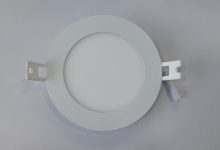Optimizing Web Design for Faster Load Times
Optimizing Web Design for Faster Load Times

In the digital age, where user patience is shrinking and competition is fierce, optimizing web design for faster load times has become crucial. A slow-loading website can frustrate users, diminish engagement, and hurt your search engine rankings. This guide will explore effective strategies for optimizing web design to ensure faster load times, enhancing user experience and boosting your site’s performance.
Understanding the Importance of Fast Load Times
Fast load times are essential for several reasons:
- User Experience: Users expect a seamless and quick experience. A delay of even a few seconds can lead to higher bounce rates and reduced user satisfaction.
- Search Engine Rankings: Search engines like Google use page speed as a ranking factor. Faster-loading pages can improve your search engine ranking, leading to more visibility and traffic.
- Conversion Rates: Faster load times can positively impact conversion rates. Users are more likely to complete a purchase or sign up for a service if the process is quick and smooth.
Key Factors Affecting Web Load Times
Before diving into optimization techniques, it’s essential to understand what impacts load times:
- File Sizes: Large images, videos, and other media can slow down your site. Compressing these files can significantly improve load times.
- Server Response Time: The time it takes for your server to respond to a request affects load speed. A high-quality hosting provider can help reduce this time.
- Browser Rendering: How browsers interpret and display your site’s code can impact speed. Optimizing HTML, CSS, and JavaScript is crucial.
- External Resources: External scripts and resources, such as third-party widgets and advertisements, can add to load times. Minimizing these can enhance performance.
Strategies for Optimizing Web Design for Faster Load Times
1. Optimize Images and Media
Images and media often account for the majority of a page’s weight. To optimize them:
- Use Proper Formats: Choose the right file format for images (e.g., JPEG for photographs, PNG for graphics with transparency).
- Compress Files: Utilize tools like TinyPNG or ImageOptim to reduce file sizes without sacrificing quality.
- Implement Lazy Loading: This technique delays the loading of images and videos until they are needed, improving initial load times.
2. Minimize HTTP Requests
Each element on a webpage (images, scripts, CSS files) requires an HTTP request. Reducing the number of requests can speed up your site:
- Combine Files: Merge CSS and JavaScript files to reduce the number of requests.
- Use CSS Sprites: Combine multiple images into one sprite sheet to minimize requests for images.
- Limit External Resources: Minimize the use of third-party scripts and widgets.
3. Implement Caching
Caching allows browsers to store copies of your site’s resources, so they don’t need to be reloaded on every visit:
- Browser Caching: Configure your server to store static files in a user’s browser cache.
- Server-Side Caching: Use caching plugins or server-side solutions like Varnish to cache dynamic content.
- Content Delivery Network (CDN): CDNs distribute your content across multiple servers globally, reducing load times for users regardless of their location.
4. Optimize Code
Efficient coding practices can lead to faster load times:
- Minify HTML, CSS, and JavaScript: Remove unnecessary characters, comments, and whitespace from your code.
- Use Asynchronous Loading: Load JavaScript files asynchronously so they don’t block the rendering of the page.
- Reduce Redirects: Minimize the number of redirects, as each one adds an additional HTTP request.
5. Improve Server Performance
Your server plays a significant role in how quickly your site loads:
- Choose a Reliable Hosting Provider: Invest in a reputable hosting provider with fast servers and good uptime.
- Use a Content Management System (CMS): Ensure your CMS is optimized and updated to its latest version.
- Enable GZIP Compression: Compress files on your server before sending them to the browser.
6. Enhance Mobile Performance
With mobile traffic on the rise, optimizing for mobile devices is crucial:
- Use Responsive Design: Ensure your site adjusts to different screen sizes and resolutions.
- Optimize Touch Elements: Design buttons and links to be easily tappable on smaller screens.
- Test Mobile Speed: Regularly test your site’s performance on mobile devices and make adjustments as needed.
7. Monitor and Test Performance
Regular monitoring and testing are essential for maintaining optimal load times:
- Use Performance Tools: Tools like Google PageSpeed Insights, GTmetrix, and Pingdom can help identify issues and provide recommendations.
- Conduct Regular Audits: Periodically review and update your site’s performance to address any new issues.
- Analyze User Behavior: Monitor how users interact with your site to identify potential areas for improvement.
Conclusion
Optimizing web design for faster load times is not a one-time task but an ongoing process. By implementing the strategies outlined above, you can significantly enhance your site’s performance, improve user experience, and boost your search engine rankings. Remember, every second counts, so investing in speed optimization can yield substantial benefits for your online presence.
By focusing on these optimization techniques, you can create a faster, more efficient website that not only meets but exceeds user expectations.








